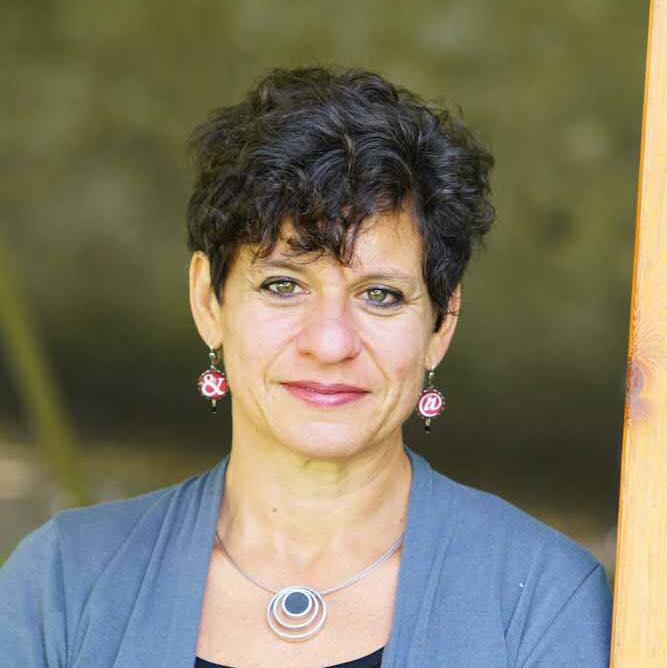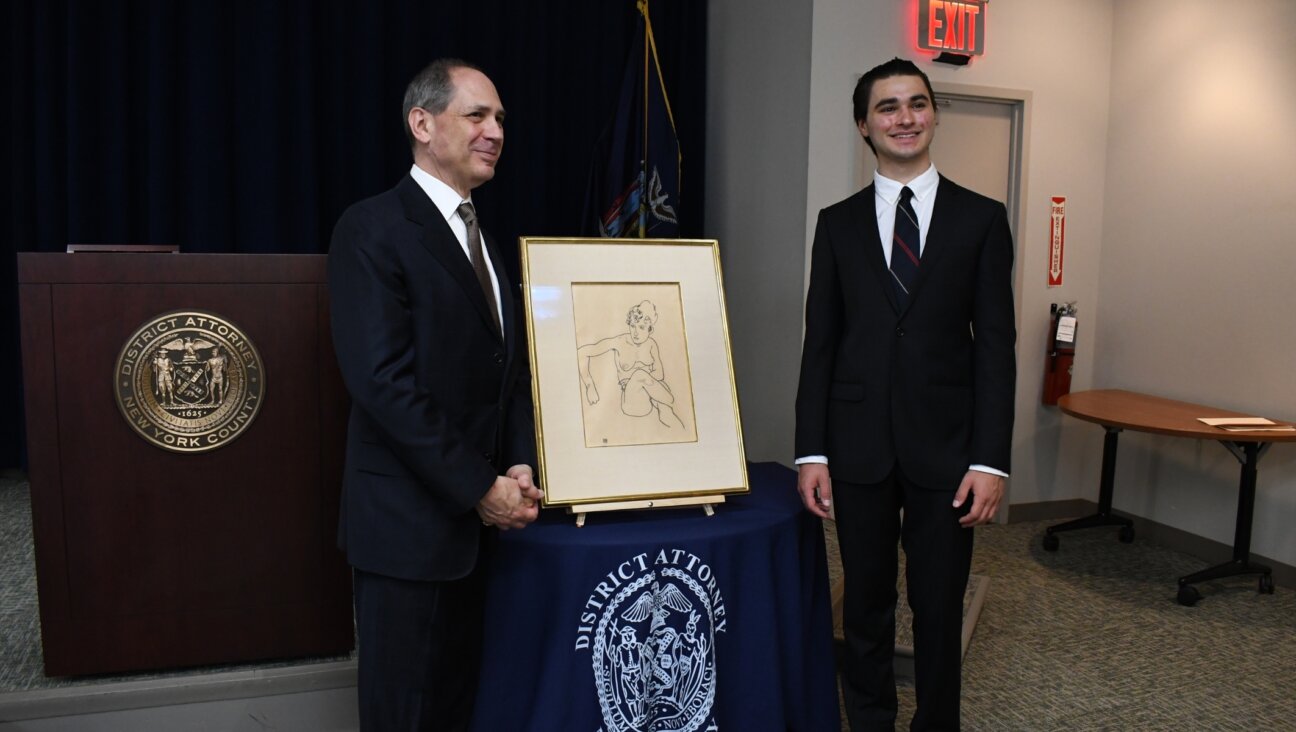Golems and Spies: Today’s Two Yiddish Literatures
Today there are two different Yiddish literatures: one secular and one chasidic. Despite the differences in their audiences, they share a language, a cultural-religious heritage and a status of almost complete obscurity to most American Jews.
Boris Sandler, by virtue of his position as editor of the Yiddish Forward, has been the gatekeeper for what little worldwide attention a secular Yiddish writer can enjoy these days. But since the publication of his latest novel, “When the Golem Shut His Eyes,” Sandler has become one of those banging on the gates.
When I met with him recently, I found him busy on the phone with the publisher of his book, a historical novel that attempts to untie the causal knot of the 1903 Kishinev pogrom. The few remaining publishers of Yiddish books for non-ultra-Orthodox audiences are located in Israel, which means that every American Yiddish author has to endure the delays and vagaries of shipment. Sandler, 53, is one of the most highly regarded (and one of the very few) Yiddish novelists in the secular community, and editor of its most widely read publication. When he put down the phone, I asked him how many copies of his book have been printed.
“Two hundred and fifty,” he said. “I have a list of a couple thousand or so people who would be interested in buying the book, but there’s no network to distribute Yiddish books.”
Still, Sandler is already at work on his next book. How can an author remain so productive with such a small audience?
“The Yiddish writer has always created his own community,” said Sandler. In fact, more people read Sandler’s novels in Russian translation than in the original — a common fate of writers of minority languages.
Mikhail Krutikov — an assistant professor of Jewish-Slavic cultural relations at the University of Michigan, a weekly columnist for the Yiddish Forward on European politics and culture, and the author of an introduction to Sandler’s “Golem” — estimates there are only approximately 50 active, secular Yiddish writers today, with fewer than 10 among them under the age of 50.
“From time to time, a talented young person appears,” he said. “If there’s a milieu to support his development, he can develop his talent, but if not, he can’t.”
On the other hand, according to Sandler, Yiddish writers benefit from an enriching “universalism” due to their statelessness. Today’s Yiddish fiction and poetry comes from, among other places, Israel, Paris, the United States and St. Petersburg, Russia. Other signs of life sprout in surprising corners; for example, there is a burgeoning interest in Yiddish culture in Germany.
Since most secular Yiddish writers today know at least a couple of languages in addition to Yiddish, their work is influenced by a wide range of schools — from the Russian avant-garde to Polish modernism to Latin-American magical realism. For example, Ikhl Shraibman, of Kishinev, Moldova, is known for his philosophical, tragicomic miniatures. Mikhl Feldzenboym, living in Israel, has written a new novel reminiscent of I.L. Peretz’s neo-chasidism; his poetry is more experimental and wide ranging. Leye Robinson, one of the younger Yiddish women writers, weaves fabulist and psychologically nuanced portraits of the natural world.
The secular Yiddish literature of the future, said Krutikov, will be “more elite and intellectual, meant for a small circle of [students and other] aficionados who can appreciate its quality.” Paradoxically, this means that monetary or other support for Yiddish literature will be even harder to get from American Jewish organizations.
Meanwhile, the other Yiddish literature can be found on the shelves of Eichler’s bookstore, in Borough Park, Brooklyn. The store has a small but substantial Yiddish section, crowded with children’s books and popular novels — all designed, according to Bruce Mitchell, a graduate student in Yiddish at Oxford and expert in charedi literature, to “strengthen faith while entertaining.”
The topics of these books would be familiar to anyone who’s looked at any best-seller list in any language: spies, chases, murder and mystery. The same words appear in many titles, from “It Stayed a Secret: A Suspenseful Story With Suspenseful Descriptions” to “The Yiddish Spy: A Suspenseful Story With Many Exciting Moments and Dramatic Descriptions” — not to mention “The Master Spy Who Became a Bal-Teshuvah.” The most popular of these works involve tightly constructed plots, exotic locales and colorful personalities, according to Malka Schaps, a professor of mathematics at Bar-Ilan University and an author of ultra-Orthodox fiction, in an essay posted on her Web site.
An Eichler’s employee, when asked to estimate how many Yiddish books are sold in a month, would only say “a lot,” but he waxed enthusiastic when asked about the latest Yiddish best seller: “Farchapt in Terror” (Trapped in Terror), by the best-selling ultra-Orthodox author Yair Weinstock, has sold “hundreds.”
A number of chasidic Yiddish journals also are published, too; ostensibly for women or “families,” they also are read by a number of men, in fact by a large section of the chasidic community. Their pages feature fiction and poetry (though based on an aesthetic that might be foreign to the hyper-literary, secular Yiddish writer), and are often concerned with questions of fidelity to “haymish” or authentic Yiddish. Precisely this concern manifests a point of contact between secular and ultra-Orthodox Yiddish writers.
When the writers of Maalos, a widely read chasidic journal, for example, want to teach their readers a more “authentic” (read: less Americanized) Yiddish, where do they turn? Nowhere else but Uriel Weinreich’s Modern Yiddish-English, English-Yiddish Dictionary, Holy Writ to many a secular Yiddish student.
More importantly, Yiddish writers and readers, both secular and ultra-Orthodox, are a minority confronting assimilative forces. The wall between Yiddish and “non-Yiddish” always has been porous, and no less so today. If most of the audience for the next Great Yiddish Novel might read it only in translation, or with imperfect comprehension through Yiddish classes, it is also true that the newest form of ultra-Orthodox literary creativity, the blog, also must navigate a bilingual terrain, where Yiddish writers read comments by readers, sometimes not comprehending, in English and Hebrew. Most of Sandler’s audience reads him in Russian; most of Weinstock’s buys his books in English and Hebrew. How much longer will ultra-Orthodox Yiddish literature retain its audience, let alone secular writers their small coterie? Never mind the answer. Sandler’s new book is due out soon, and “Trapped in Terror” is available online for only $24.99.
Zackary Sholem Berger is a poet, a blogger in both Yiddish and English, and the translator/co-publisher of Di Kats der Payats, The Cat in the Hat in Yiddish (www.yiddishcat.com). He is working on a novel in Yiddish.
A message from our editor-in-chief Jodi Rudoren

We're building on 127 years of independent journalism to help you develop deeper connections to what it means to be Jewish today.
With so much at stake for the Jewish people right now — war, rising antisemitism, a high-stakes U.S. presidential election — American Jews depend on the Forward's perspective, integrity and courage.
— Jodi Rudoren, Editor-in-Chief























